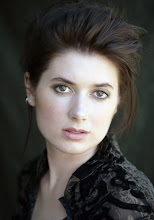Sunday, September 5, 2010
HOW SOCIETY SUCKED.
http://home.clara.net/heureka/art/beat-generation.htm
WHEN IMAGINATION RUNS WILD.
Emma Dean and the Imaginary Friends, a cabaret at the Butterfly Club.
The audience was ushered and accosted into the 50 seat show room at the butterfly club, by Dr. Dream the psychotic psychiatrist, Gigi the sensual and Henry the disturbed. Three Sydney physical performance artists appearing in Emma Dean and The Imaginary Friends. Emma Dean herself appeared after a couple of minutes dressed in a black vest and a pair of frilly knickers over stockings. She sat down behind the piano, pale skin and red hair illuminated in the spotlight. She hunched her shoulders over the keys, bent her long neck and raised a delicate hand. The beginning notes of “Pure Imagination” from Charlie and the Chocolate Factory floated through the stuffy silence in the tiny Butterfly Club show room. As Dean began to sing, her ethereal voice wove a hypnotic web over the audience, and as we sat entranced, you could occasionally see Gene Wilder himself looking out of her eyes. “Emma Dean and the Imaginary Friends” has little story line to speak of, but explores the various routes that Dean’s imagination takes. Henry, Gigi and Dr. Dream, meant to be representations of three different facets of Dean’s inner workings, danced and occasionally sang to original and popular songs, thrashing and stomping, clapping and thrusting, in energetic and vulgar fashion with anguished and comic facial expressions. Dean was in charge, a pixie-like puppeteer either hushing them or running with the thought. Dean proved a consummate performer, especially showing such a depth of character in her voice alone.
The show was developed firstly by several of Dean’s songs having a common thread and her interest in “combining music with physical theatre”. This is unfortunately where the show fell a little flat. The dancers, while obviously talented, were over the top and quite unnecessary to the development of the show. Dean could have easily carried the entire performance on the strength of her ability and talent. Her voice flicks and floats between Quasimodo-esque grunts, ethereal melodies, operatic squawks and folksy hoots, with barely a hint of effort. Her eyes, face and hands tell an exquisite tale of each story, which was quite often negated by the energetic choreography happening on the other side of the piano. According to Dean, each character was developed on a shopping trip for false eyelashes. “Each performer was drawn to a particular fake eyelash and we kind a developed the characters from the eyelashes they chose” She said in a brief interview after the show. The idea of having the abstract dancing, is supposed to make the show more cabaret and strange, however they are purely distracting, and detract from the beauty of Dean’s voice and original song writing. The performers however, were not untalented and managed to slip in a few amusing moments.
Dean, hailing from Sydney is currently completing a tour of the east coast and has this year won the prestigious “Under Our Wing Award” from the butterfly club. Neville Sice, co-owner of the Butterfly Club compares her to “Bjork, except easier to listen to, and far better to look at!”
Dean and the Imaginary Friends is an interesting show, with plenty of colour and a little bit of mind twisting. It could be enjoyed just as much if the audience were to sit there with their eyes closed.
Gigi the sensual imagination was played by Amanda Laing, Dr. Dream the imaginary psychotic psychiatrist was played by Walter Davis Heart and Henry the disturbed imagination was played by Leah Reutens.
Stars: 3 out of 5
Venue: Not the most appropriate for this show, as the dancers were meant to be behind Emma Dean while she played the piano. This cramped stage doesn’t do justice to the idea of physical theatre meets music.
